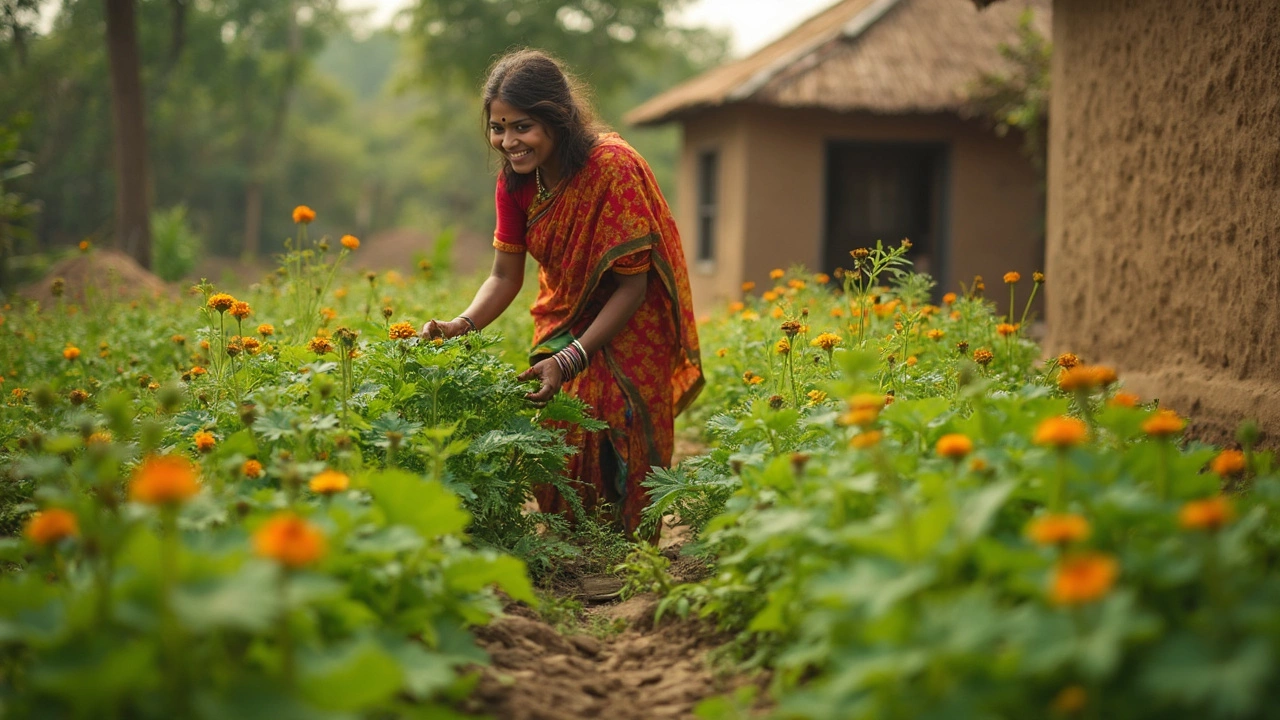Growing Indian Vegetables: Practical Tips for Indian Gardens
Want a kitchen garden that actually feeds you? You don’t need a huge plot or fancy tools. With a few smart choices you can grow tasty, nutritious veggies right at home, no matter if you live in Punjab or Kerala.
Pick Crops That Match Your Climate
India’s climate varies a lot, so the first step is to select veggies that love your weather. In hot, dry zones like Rajasthan, try okra, bottle gourd, and chilies – they thrive on heat and need little water. In the cooler hills of Himachal, beans, peas, and cabbage do well because they prefer mild temps. If you’re on the coast with monsoon rains, go for brinjal, tomatoes, and leafy greens that can handle occasional waterlogged soil.
Check the local seed catalog or talk to a nearby farmer. They’ll tell you which varieties have proven success in your district. Using a regional variety also means the plant is already adapted to local pests and soil types.
Soil, Water & Boosting Yields
Good soil is the foundation of any garden. Indian soils are often heavy or sandy, so mix in plenty of organic compost. Compost not only loosens compact soil but also adds nutrients that keep veggies healthy. For heavy clay, add coarse sand or garden grit – it improves drainage and lets roots breathe.
Watering can be a headache, especially when water is scarce. Drip irrigation is a game‑changer: it delivers water directly to the root zone, saves up to 60% of water, and reduces weed growth. If you’re on a budget, a simple soaker hose works well for raised beds. Just lay the hose on the soil surface and let it seep slowly.
Timing matters. Water early in the morning or late evening to cut evaporation. For seedlings, keep the soil moist but not soggy – a quick check with your finger can tell you if it’s too wet.
Fertilize smartly. A balanced NPK (nitrogen‑phosphorus‑potassium) mix at planting time gives a strong start. Later, side‑dress with kitchen waste compost or cow dung to keep the nutrient flow steady. Over‑fertilizing can burn roots, so follow label instructions.
Companion planting is another low‑cost way to boost yields. Plant basil or marigold near tomatoes to repel aphids, or grow beans next to corn – beans fix nitrogen while corn offers support. This “sister plants” approach reduces the need for chemical pesticides.
If pests do show up, try natural solutions first. Neem oil spray, garlic paste, or a sprinkle of ash can keep many insects at bay. For larger issues, consider encouraging beneficial insects like ladybugs or lacewings by planting flowering herbs.
One of the most profitable veggies right now is broccoli. Our Broccoli Farming in India guide shows that with proper spacing, drip irrigation, and timely pest control, you can earn good returns even on a small plot. The same principles apply to other cruciferous crops like cauliflower and cabbage.
Don’t forget crop rotation. Moving the same family of vegetables to a different spot each season breaks pest cycles and balances soil nutrients. A simple rotation could be: leafy greens → root crops → fruiting vegetables → legumes.
Finally, keep an eye on the market. If you have extra produce, local farmer markets or tie‑ups with nearby grocery stores can turn surplus into extra cash. Even a small backyard can become a source of fresh, chemical‑free food for your family.
Start small, learn from each season, and tweak your plan as you go. With these easy steps, growing Indian vegetables becomes an enjoyable, rewarding routine that feeds both body and soul.

Vegetables Native to India: What Every Gardener Should Know
Curious about which vegetables truly come from India? This article dives into the roots of common vegetables in Indian gardens, highlighting what’s native and what came from elsewhere. Get straight answers with history, practical growing tips, and ways to make the most of native crops. Whether you’re starting a kitchen garden or just want to know your food better, you’ll find something new. There’s more to Indian veggies than meets the eye.
About
Vegetable Gardening
Latest Posts


Do Plants Really Purify the Air? The Truth About Houseplants and Indoor Air Quality
By Alden Thorne Jun 14, 2025

Two Drawbacks of Green Roofs You Should Know
By Alden Thorne Oct 8, 2025

Understanding the Drawbacks of Drip Irrigation Systems
By Alden Thorne Dec 24, 2024
